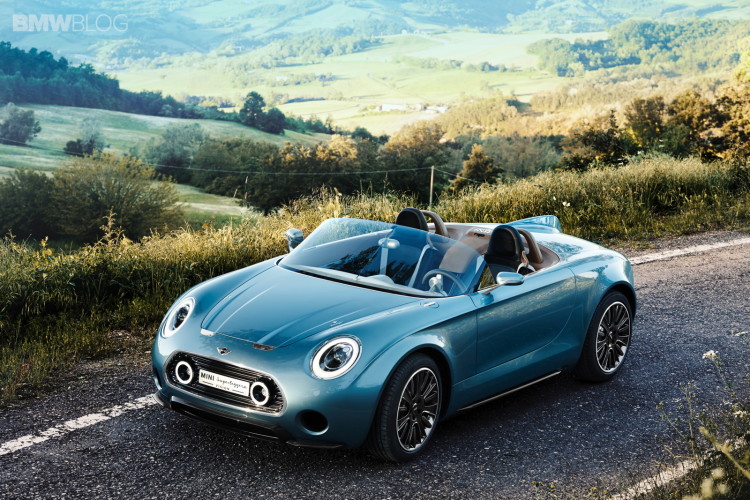Press Release: The University of California, Davis and the BMW Group today released the largest publicly available study of electric-car users ever conducted – including over 120 families who drove the fully electric MINI E automobile more than 1 million miles in California, New York and New Jersey from June 2009 to June 2010. The report shows that the participants found the cars to be fun yet practical, easy to drive and recharge, and many said they would buy an electric car in the next five years, according to UC Davis researchers.
As battery electric vehicles (BEVs) enter the commercial marketplace for the first time, the results of this year-long study by the UC Davis Plug-in Hybrid & Electric Vehicle Research Center provide valuable insight into new ways that consumers value BEVs.

Through online and telephone surveys of the participating households, and diaries and in-person interviews with a subset of more than 40 households, the UC Davis MINI E research team examined user behavior, infrastructure use, costs, environmental benefits, and other aspects of electric driving.
Among the key findings of the study are the following:
- 100% of respondents said BEVs are fun to drive and practical for daily use
- Respondents said the MINI E met 90% of their daily driving needs
- 71% of respondents drove fewer than 40 miles/day; 95% drove fewer than 80
- 99% of respondents said home charging was easy to use
- 71% of respondents said they are now more likely to purchase a BEV than they were a year ago while only 9% said they are less likely.
- 88% of respondents said they are interested in buying a BEV or plug-in hybrid electric vehicle in the next five years
- By the end of the lease period, MINI E drivers overwhelmingly thought that the electricity for charging their BEV should come from renewable resources such as solar, wind and hydropower, and were strongly opposed to using coal to generate electricity for their vehicles.
The UC Davis study is part of a whole set of studies being conducted by the BMW Group on electric vehicles, which includes research in China, Germany and the U.K.
Compelling combination of “clean and fun”
UC Davis Plug-in Hybrid & Electric Vehicle Research Center director Tom Turrentine said the study highlights three new and potentially significant ways that drivers value BEVs. First, the MINI E meets drivers’ desire for a vehicle that is both environmentally friendly and fun to drive. Drivers loved the vehicle’s quick acceleration and quiet operation.
“What we heard over and over again in our interviews is how fun it was to drive. That’s in part because it’s a MINI and in part because of the feel of electric drive,” Turrentine said.
Second, drivers find value in using electricity as a fuel and in mastering their individual energy use through efficient driving behaviors. “The combination of limited onboard energy and extreme efficiency make BEVs the premier appliance for people to experience energy use,” says Turrentine. Additionally, the drivers learned to appreciate the car’s powerful regenerative braking function, which returns energy to the battery and allowed them to drive using a single pedal for acceleration and braking.
Third, drivers like to develop their clean driving territory. “Drivers start talking about the MINI E as a special way to explore their region. They of course can go anywhere in their gas car, but they like to talk about where they can go in their MINI E,” Turrentine says.
“Range anxiety” not a big issue for experienced MINI E drivers
While range is often held up as a limitation of BEVs, the MINI E’s range of around 100 miles was acceptable to most drivers most of the time. “We found that households adapted their driving around the capabilities of the vehicle and even explored ways to maximize the use of the MINI E,” said Turrentine.
By studying the MINI E drivers’ usage patterns and need for range, researchers were able to determine that strategic placement of charging stations could allow drivers to reach most of their desired destinations using a BEV that has a range of 90 to 100 miles. Most charging occurred at home, at night, and 99% of respondents said home charging was easy to use.
BMW Group prepares 2nd phase of its EV strategy with BMW ActiveE
“The MINI E studies are extremely valuable for us as they show that electric cars are already today offering an attractive mobility solution to a broader spectrum of customers. While reducing the tail pipe emissions to zero, the MINI E provides the fun that users expect when driving our products. The results of the UC Davis study have a direct impact on the development of all BMW Group electric vehicles to come,” says Ulrich Kranz, head of project i, BMW Group. “BMW Group now is developing the next generation of full electric cars, with the BMW ActiveE test fleet coming into the market in 2011 and the series production BMW i3 following in 2013.”
The all-electric BMW ActiveE will be available in select US markets beginning in late 2011, for a two-year lease at $499/month, with a $2,250 down payment. Details can be found at www.BMWUSA.com/ActiveE. Join the growing conversation about the future of mobility at www.BMWActivetheFuture.com.
[Source: BMW ]




































































